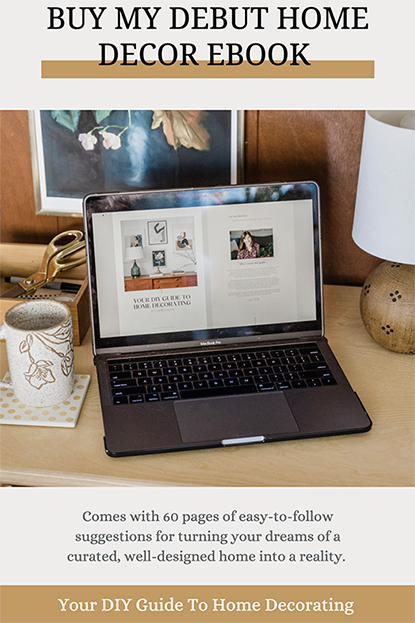.jpg)
It’s time to share what I’ve been posting over on my LTK account! I started this series because I didn’t want you to miss out on this free content in case you’re not following along on LTK or Instagram, so I’ll be posting a roundup here on the blog at the end of each month to help inspire your home décor brainstorming. Don’t forget to click all the way through to LTK (links are included in the paragraph explanations below) to get direct linked access to all of the pieces in each collection.
Bold Dining Nook:
This month was full of mental inspiration for me since I’ve been saving my pennies for other things and haven’t been spending much on home décor for our real life home. I am so excited to share the dream rooms that I schemed up this month to feed my creativity, starting with a bold dining nook full of sophisticated color and textures. I’m particularly smitten with the area rug and that unique gold chandelier. The aim of this hypothetical space was to create a dining area that took up very little square footage for those of you who live in an apartment or are carving out an eat-in area within your kitchen, so I picked a round dining table and a bench that allows you to push the arrangement up against a wall. Click here to get shopping links to everything you see in the graphic above.
.jpg)
Contemporary Desert Bedroom:
Did you see our primary bedroom makeover reveal earlier this week? Well, suffice it to say that I’ve had cozy bedroom designs on my mind as of late, and I thought I’d try my hand at designing an earthy desert-inspired space for fun as part of my weekly mood board shares. That textured rug looks like it would be so comfy under-foot, and the boucle bench design is super eye-catching, in my opinion! The art collection is the real star of this scheme, though. Aren’t the colors in this piece, in particular, so soothing? Shop the look this way.
.jpg)
Cool Cozy Lounge:
Another room makeover that I’ve been personally dreaming about is our back bedroom lounge. We made the decision to turn our never-used guest room into an everyday living space, and the cool lounge mood board that you see above is a direct representation of those plans. Some of the art and textiles were chosen just for fun if money was no object in our project, but the rest of the accents are actually what we’ve really used in the space (I even found a wallpaper that looks like the existing 1960s print from when our home was built!). I can’t wait to reveal that revamped space to you soon…In the meantime, you can peruse the links to this mood board collection over on my LTK feed here.
.jpg)
Funky Colorful Entry:
We definitely don’t have any real life plans to update our small entry, but if we had a larger space and a healthier home décor budget, you better believe that I’d be making this funky colorful entry design a reality! I loved picking more contemporary pieces for this mood board, like the curvy lamp, handmade catchall dish, and geometric rugs (shop the bronze/yellow option here, and the ivory/beige one is linked here). The art collection is the part I clearly had the most fun curating. I wanted to pull together options that would make you smile as you walk in and out of the door—pieces that put some pep in your step. If you love this look as much as I do, you can get all the sources here on my feed.
.jpg)
Trendy Vintage Office:
Bringing things back down to the earth is this mood board for a trendy vintage office. I decided to use the term “Trendy” in the title because I’ve noticed that earthy antique-looking décor is sort of all the rage right now. And bravo to the design world for making it so! This, of course, is a classic look that will never go out of style, and, thankfully, there are lots of ready-made pieces on the market now that can afford you the look of antique home décor for a fraction of the price of what you’d pay for authentically vintage art and furniture. I’m especially loving that retro-looking desktop speaker and the pair of leather chairs. I couldn’t believe the price on those! It’s good to be a vintage-loving homemaker living in 2025…Shop the whole room this way.
Let me know in the comments if you have a specific room or spot in your home that you’d like me to mood board next! I always make sure to prioritize follower requests first, so please do tell what’s on your list of future house projects.
*This post contains affiliate links, which means that I earn a small commission when you purchase products that I recommend at no additional cost to you. This allows me to provide free creative content for you to read, save, and share. Rest assured that I never recommend products we wouldn’t use or don’t already love ourselves.

.png)
.jpg)
.jpg)
.jpg)
.jpg)
.jpg)
.jpg)
.jpg)
.jpg)
.jpg)
.jpg)
.jpg)
.jpg)
.jpg)
.jpg)
.jpg)
.jpg)



